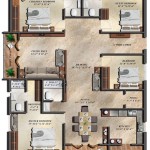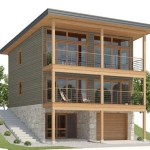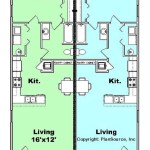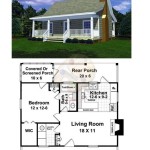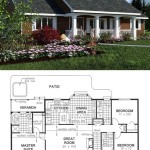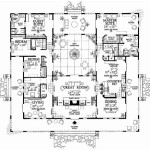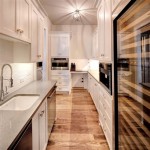Three Bedroom House Floor Plan With Measurements And Dimensions
A three-bedroom house floor plan is a common and versatile design choice for a range of homeowners, from small families to individuals who desire extra space for guests or hobbies. Understanding the measurements and dimensions within these floor plans is crucial for evaluating the suitability of a particular design, planning furniture placement, and estimating construction costs. This article will delve into the key aspects of three-bedroom house floor plans, focusing on typical dimensions, layout considerations, and the impact of these factors on overall livability.
The term "three-bedroom" refers to the inclusion of three separate rooms designated primarily as sleeping quarters. However, the overall square footage, layout, and design can vary considerably. A modest three-bedroom house might be approximately 1,000 square feet, while a larger, more luxurious design could easily exceed 2,500 square feet. The specific needs and preferences of the occupants should guide the selection of a floor plan.
Measurements and dimensions are essential for accurate space planning. Architects and designers use standardized units, typically feet and inches, to specify the length, width, and height of rooms and other areas within the house. These measurements are usually included on the floor plan itself, allowing potential buyers or builders to visualize the scale of the spaces and make informed decisions.
Typical Dimensions of a Three-Bedroom House
While the exact dimensions will vary based on the overall design, some typical measurements can be outlined as a general guide. The master bedroom, often the largest bedroom, typically ranges from 12 feet by 14 feet to 16 feet by 20 feet or larger. This provides ample space for a king-size bed, dressers, and other furniture. Secondary bedrooms usually range from 10 feet by 12 feet to 12 feet by 14 feet, sufficient for a queen-size bed or twin beds, a desk, and a closet.
The living room or great room is another critical space. Its dimensions can vary significantly depending on the overall size of the house and the desired functionality. A typical living room might be 15 feet by 20 feet to 20 feet by 25 feet, allowing for comfortable seating arrangements and entertainment options. The kitchen is typically integrated with the dining area or located adjacent to it. Kitchen dimensions often range from 10 feet by 12 feet to 12 feet by 15 feet, depending on the layout and the inclusion of features such as an island or breakfast bar. Dining areas are commonly 10 feet by 10 feet to 12 feet by 12 feet, accommodating a dining table and chairs.
Bathrooms are generally smaller spaces but require careful planning. A master bathroom, often attached to the master bedroom, typically includes a shower, toilet, and vanity. Its dimensions might range from 8 feet by 10 feet to 10 feet by 12 feet. Secondary bathrooms, serving the other bedrooms, are often smaller, perhaps 5 feet by 8 feet to 8 feet by 10 feet. Closets are an integral part of a three-bedroom house plan. Bedroom closets are typically 2 feet deep and can range in width from 4 feet to 8 feet or more, depending on the storage needs. Linen closets, coat closets, and pantry closets are also common additions, each with its own specific dimensions.
Hallways and entryways are essential for circulation within the house. Hallways are typically 3 feet to 4 feet wide to allow for comfortable passage. Entryways might be larger, providing a welcoming space for guests and accommodating furniture such as a console table or bench.
It is important to note that these are just typical dimensions, and variations are common. Factors such as architectural style, regional preferences, and individual design choices can all influence the specific measurements within a three-bedroom house floor plan. Always consult with an architect or designer to ensure that the dimensions meet your specific needs and preferences.
Beyond the individual room dimensions, the overall layout and flow of the floor plan are crucial. An open-concept design, where the living room, kitchen, and dining area are combined into one large space, is a popular choice for modern homes. This layout promotes interaction and creates a sense of spaciousness. Other layouts might separate the living room from the kitchen and dining area, providing more privacy and noise control. The placement of bedrooms is also a key consideration. Some floor plans locate all three bedrooms on one side of the house, while others separate the master bedroom from the secondary bedrooms for added privacy. The location of bathrooms, closets, and laundry rooms should also be carefully considered to ensure convenience and efficiency.
Factors Influencing Room Dimensions
Several factors influence the dimensions of rooms within a three-bedroom house floor plan. The overall square footage of the house is a primary determinant. A smaller house will naturally have smaller rooms, while a larger house can accommodate larger rooms. The intended use of each room also plays a role. A master bedroom that is intended to function as a private retreat might be larger than a standard master bedroom. A kitchen that is designed for serious cooking and entertaining might have more counter space and storage than a basic kitchen.
Building codes and regulations can also influence room dimensions. Many building codes specify minimum room sizes to ensure adequate living space and ventilation. These minimums can vary depending on the locality and the type of dwelling. The location of windows and doors also affects the dimensions of rooms. Windows need to be of a certain size to provide adequate natural light and ventilation, and doors need to be wide enough to allow for easy access. The layout of walls and partitions can also influence room dimensions. Walls need to be structurally sound and properly insulated, which can affect the overall size and shape of the rooms.
The budget for the construction project also plays a significant role. Larger rooms typically require more materials and labor, which can increase the overall cost of the house. Simplifying the layout and reducing the size of rooms can help to control costs. Personal preferences and lifestyle also influence room dimensions. Some homeowners prefer larger bedrooms and smaller living rooms, while others prefer the opposite. The layout and dimensions of the house should reflect the unique needs and preferences of the occupants.
Impact of Dimensions on Livability
The dimensions of a three-bedroom house directly impact its livability. Adequate room sizes ensure that occupants have enough space to move around comfortably and store their belongings. A cramped house can feel claustrophobic and stressful, while a spacious house can promote relaxation and well-being. Proper room dimensions also allow for flexible furniture arrangements. A larger living room can accommodate a variety of seating configurations, while a smaller living room might be limited to a few pieces of furniture. The dimensions of the kitchen and dining area should also be considered in relation to the number of people who will be using these spaces regularly.
The layout of the floor plan and the relationship between rooms also contribute to livability. An open-concept design can create a sense of spaciousness and promote interaction, while a more compartmentalized layout can provide more privacy and noise control. The placement of bedrooms in relation to the living areas should also be considered. Separating the master bedroom from the secondary bedrooms can provide added privacy and reduce noise disturbance. The location of bathrooms and laundry rooms should be convenient and accessible to all occupants.
Natural light and ventilation are essential for a healthy and comfortable living environment. Windows should be strategically placed to maximize natural light and ventilation. Room dimensions should be considered in relation to the size and placement of windows. A larger room might require more windows to provide adequate light and ventilation. Proper insulation and ventilation are also important for maintaining a comfortable temperature and preventing moisture buildup. The design of the floor plan should take into account the local climate and environmental conditions.
Accessibility is another important consideration, particularly for individuals with mobility limitations. Hallways and doorways should be wide enough to accommodate wheelchairs or walkers. Bathrooms should have grab bars and accessible fixtures. The dimensions of rooms should allow for easy maneuverability. Universal design principles can be incorporated into the floor plan to create a house that is accessible to people of all ages and abilities.
In conclusion, the dimensions and layout of a three-bedroom house floor plan are crucial factors in determining its overall livability. Careful consideration should be given to the size and arrangement of rooms, as well as the placement of windows, doors, and other features. Consulting with an architect or designer can help to ensure that the floor plan meets the specific needs and preferences of the occupants, creating a comfortable and functional living space.

Simple Yet Elegant 3 Bedroom House Design Shd 2024031 3da

Best Of House Plans 3 Bedroom 1 Bathroom New Home Design

Pin Page
Small House Design Ideas With Floor Plan 3 Bedroom Plans

28x36 House 3 Bedroom 1 Bath 008 Sq Ft Floor Plan Instant Model 1h

Three Bedroom Classic Ranch Home Plan 900 Sq Ft 67776nwl Architectural Designs House Plans

The Blue House Three Bedroom Plan And Two Bathrooms Cool Concepts

12 Examples Of Floor Plans With Dimensions

Floor Plan With Dimensions Guide To Drawings

The Fedha 3 Bedroom Bungalow House Plan David Chola Architect
Related Posts

